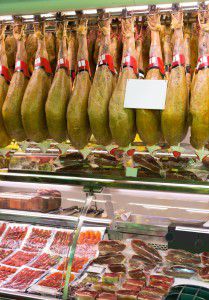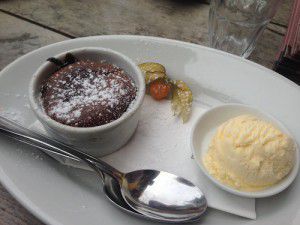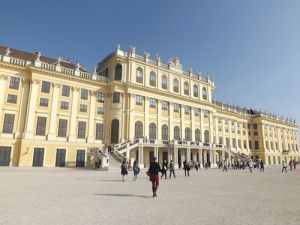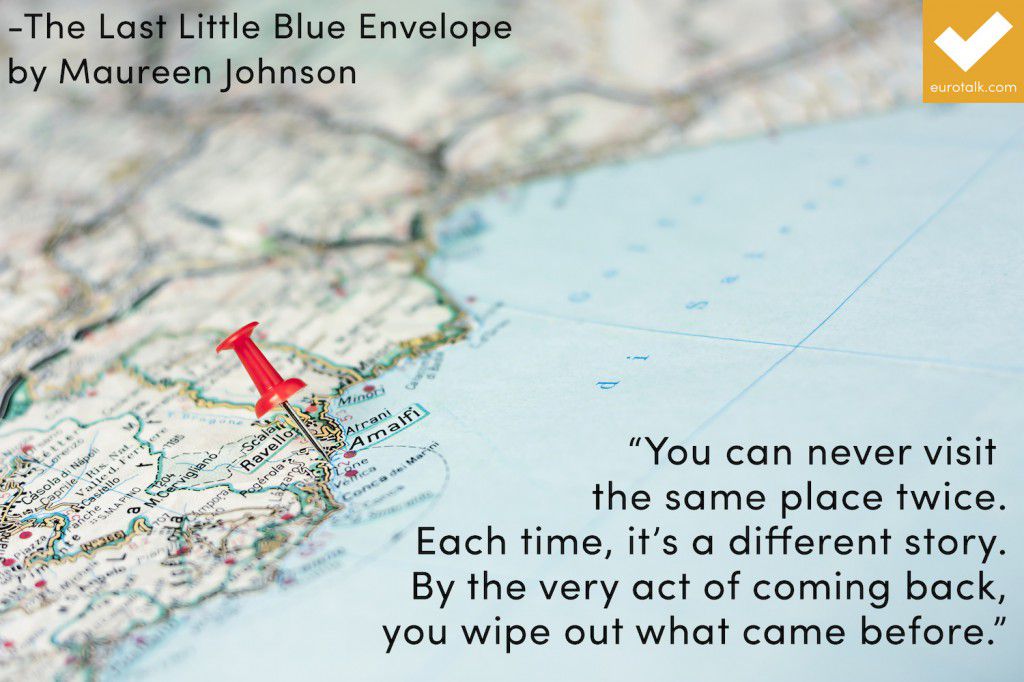The Long And Winding Road… of Long Distance Bus Travel
If you’re on a budget or just want to indulge in a bit of thinking time, travelling across Europe by bus could be the thing for you. With numerous companies offering fantastic prices, it’s a wonder that more people haven’t partaken in this not-so-secret method of transport.
Based on two particular routes*, here are some ‘dos and don’ts’ from our own personal experience.
Checking In
If you are travelling from the UK, Victoria Coach Station insist on you being available to check in at least one hour before departure. From other countries it is usually around half an hour maximum.
Check in normally involves only showing your ticket or reference number, however in some places there will also be an additional check of your ID card or passport.
If you want to guarantee a window seat or that your luggage is on first, face the fact that you will have to queue. Embrace it. Or at least prepare some good music to dance to whilst waiting.
Luggage
Whilst coach companies are very generous and often overlook oversized luggage, don’t get too greedy. Luggage limits are usually around 25kg and it’s mostly okay to go over that – although not with your entire house. On a very recent trip one single traveller was furious that her guitar, record player, large holdall, large backpack, and two very large suitcases were deemed too much. Shocking.
On The Bus
Thankfully coach seats do not recline as much as plane seats might, but there will always be someone who believes they alone need all the body space and legroom that is/isn’t available.
Mind where you sit. If you’re someone who needs the toilet regularly then you have to weigh up the pros of being close to the toilet with the cons of constantly hearing the door slam and the toilet flush – amongst other things.
Also. Take tissue with you. The one solitary toilet roll that is often installed in coach toilets pretty quickly disappears, so if you need to use the facilities more than two hours into the journey, take your own supply.
Trips to the toilet in the middle of the night can either be a human assault course or a foot fetishist’s idea of heaven: those lucky enough to not have to share a seat will sprawl out as best they can, with feet both socked and bare blocking your way. Do what you will.
Take headphones or earplugs. You are guaranteed to have either one token unhappy child or one potentially unstable adult who feels the need to tell everyone their life story. Look busy. At all times.
A small blanket is a very good idea for the coach, no matter the season you travel in. There’s nothing worse than attempting to sleep as a contortionist might, when there’s a breeze coming in on your back or you are shivering.
If you board a bus that originates from the UK, and you happen to have a UK adapter/plug, guard it with your life. For once other unprepared passengers are aware of this little treasure, everyone will suddenly want to befriend you and ‘borrow’ it.
Regular Stops
When there is a stop, use the toilet. Whether you feel the urge or not. If nothing else it is an opportunity to wash your hands thoroughly as the sinks in coach toilets always seem to have the smallest trickle of water and very little soap.
Take plenty of change with you for the vending machines at service stations. Not only will this work out cheaper than buying a ‘proper’ coffee at every stop, you will also be pleasantly surprised by the range and quality of hot beverages available. Especially in France. May we recommend the vanilla cappuccino.
Crossing The Channel
Depending on the time of day, you will either face the claustrophobic challenge that is the Channel Tunnel, or walk around a ferry at your leisure for around an hour before trying to find your coach again at the last minute. The ferry feels much more civilised as you can lounge on sofas or pace up and down the deck, but the Tunnel is much faster.
Be prepared for long delays at the border. It can either take under half an hour to go through the two separate controls for France and England, or it can take two hours. It depends on if they feel like checking your luggage as well as your passports, if they want their sniffer dogs to check you over, and if your fellow passengers who need visas have filled in or need help with filling in their paperwork.
Pet Peeves And Pluses
The main pet peeve of long distance coach travel, it has to be said, are Those People. You know the ones. Those who feel that every single stop, be it to refuel or for the driver to change, is their own personal cigarette break. Those that when the driver says there is a 45 minute break, decide to casually stroll into the service station five minutes before departure and delay the coach with their hot drinks that the driver has clearly said are not allowed onboard. Those that are veterans of the journey and will not leave the driver alone for a moment, or will give the entire coach a loud, running commentary the entire route.
A big plus is the long stops when changing buses. Stopping in Paris for 3 hours gives you ample time to wander to the Eiffel Tower and Arc de Triomphe as well as popping into a patisserie for a cheeky pastry for your petit dejeuner.
It does have to be said though, at least in our experience, that the drivers make the journey. They are jolly, they tell bad jokes, and they cheer you on with gusto to encourage you to get through the border control quicker than their previous coach passengers. Definitely an added bonus that will make you smile.
Bus travel. It isn’t for everyone. But perhaps it is for you.
Kelly
One more plus from us: you’ll meet loads of interesting people on your bus journey. Why not download uTalk for iOS, so you’ll always know how to say hello, even if you’re from different countries?
*Budapest to London, via Eurolines, with a travel time of 26 hours and 45 minutes. Calling at: Győr, Vienna, Linz, Liege, Brussels, Ghent, Lille and Dover before terminating at Victoria Coach Station, London.
Barcelona to London, via Megabus, travelling for approximately 26 hours. Calling at: Toulouse, Brive, Paris and Amiens and terminating at Victoria Coach Station.
Travels with a language geek
After almost three years as an (unofficial, for the last year) member of the EuroTalk family, I’ve finally decided that it’s time for me to move on and take my passion for languages and cultures on the road. So, I’m hanging up my localisation project manager hat (not literally of course – there’s no designated hat for that) and setting off on a trip across Europe.
 I have to say that at the moment my plans are pretty vague. My partner has a car, so we’re packing our stuff in the boot, getting in and heading off for a mega road trip across Europe: the Netherlands, Germany, the Czech Republic, Poland and Ukraine, for a start. Then the idea is to end up in Lviv, Western Ukraine and stick around there for a while until we decide the next phase of our plan. There’s no particular time-scale on any of this – we’re simply going to drive from city to city, visit a few friends, see some sights and move on when we feel like it. The only limit on how much time we can spend driving from place to place is money, and how long we can stand spending that much time together. When we finally get to Lviv, we’re planning to rent a flat there for a while and live the digital nomad lifestyle, experiencing life in Ukraine and using Lviv as a base from which to explore other parts of Eastern Europe.
I have to say that at the moment my plans are pretty vague. My partner has a car, so we’re packing our stuff in the boot, getting in and heading off for a mega road trip across Europe: the Netherlands, Germany, the Czech Republic, Poland and Ukraine, for a start. Then the idea is to end up in Lviv, Western Ukraine and stick around there for a while until we decide the next phase of our plan. There’s no particular time-scale on any of this – we’re simply going to drive from city to city, visit a few friends, see some sights and move on when we feel like it. The only limit on how much time we can spend driving from place to place is money, and how long we can stand spending that much time together. When we finally get to Lviv, we’re planning to rent a flat there for a while and live the digital nomad lifestyle, experiencing life in Ukraine and using Lviv as a base from which to explore other parts of Eastern Europe.
You might wonder why of all places I’ve chosen to go and live in Ukraine. Well, I wish I could give you a really great and well-thought out reason, but the simple fact is: it’s really cheap to live there right now! According to NomadList.com, you can live in Lviv on $400 a month. That’s around £250 – less than half of what I pay each month in rent here in London. Which is pretty appealing to someone who is trying to live as a digital nomad for the foreseeable future. For those of you who don’t spend as much time as I do stalking travel bloggers on Twitter, a digital nomad is someone who lives abroad and/or travels indefinitely, funding themselves by working remotely via wifi and their laptop. A few intrepid travellers out there have managed to fund themselves all the way around the world just by blogging, writing or completing other online work. In my case I’ll be translating to earn my daily bread, whilst pretending to be a super-cool international travel blogger the rest of the time. It’s all about wearing expensive sunglasses and taking selfies, I’m assured.
But taking advantage of 30p beers isn’t the only reason I’m excited to experience life in Eastern Europe. As a language geek, of course I can’t wait to try my hand at picking up Russian and bits of other local languages: Polish, Ukrainian and Czech sounds like a start! Not to mention finding out as much as I can about the culture, lifestyle and places of this amazing region. Oh, and I’ll be bombarding everyone with updates and photos via my brand-new blog: postcardsfromukraine.com, which is already in the top ten blogs about being a digital nomad in Ukraine written by a Brit and an Italian. So, if you’re curious, feel free to catch up with us on Twitter @ukrpostcards or the Postcards from Ukraine Facebook page, and I promise to keep EuroTalk updated on my language-learning goals too.
Alex
Supermarket Swipe
I’m a Morrisons kind of girl.
And when I look longingly into my box of Yorkshire Tea and see nothing but tealeaf dust, I miss it.
I miss a store layout I recognise. I miss being a ble to identify what things are without imaginative guess work and Google Translate. But most of all, I miss English products.
ble to identify what things are without imaginative guess work and Google Translate. But most of all, I miss English products.
When you are far from home and craving custard, and the mere pronunciation of the word ‘vanilla’ fills shop assistants with mirth, you too will experience saudade at the thought of your local supermarket. Because supermarkets abroad sell all manner of things that you would not expect to find. And asking for help when you aren’t exactly sure what you’re asking for is everything from embarrassing to adventurous.
It’s tricky out there.
My fellow Brits abroad: on returning home, don’t be surprised if you feel the sudden urge to run into your nearest supermarket and pull the fishmonger into a tight embrace. Just make sure he doesn’t have a fish filleter in his hand when you do.
Still, never let it be said that there aren’t delightful discoveries to be made Out There. Here is a selection of my own that I haven’t yet decided if I am looking back on with fright or fondness.
China
China might be a bit of an outlier in the joy of supermarket shopping. The ones I went to were the full several-floor ‘we sell everything you can think of and probably some things you have nightmares about’ flavour, with counters offering up an array of unknowns and unidentifiables.
If you are an avid coffee drinker, it might be wise to take a stash of your own. Those crimes-against-coffee all-in-one sachets of coffee, milk powder and sugar are enough to make any coffee aficionado turn and weep.
Something that truly delighted me in Chinese supermarkets (and yes. I am easily amused) was that you can buy milk in pouches. Rather than the cartons we are used to in the UK, milk here – and expect a wide variety of dairy, soya and rice milk – is often sold in these thick, plastic pouches that have a satisfying squishy feeling when you juggle them in your hands. Not that you should really do that. Unless you want an audience.
Hungary
 Hungary is the land of paprika and sour cream. Paprika comes in different strengths of spiciness and there are either ‘regular’ or ‘sweet’ varieties to choose from. Sour cream (tejfol) has all sorts of uses in both sweet and savoury dishes, and you can buy it in all manner of sizes – from the small cartons arranged like pots of fromage frais, to the litres of the stuff in containers the size of those value packs of magnolia paint at B&Q. (It is also apparently a very effective ‘after sun’, but I’m not sure about that.)
Hungary is the land of paprika and sour cream. Paprika comes in different strengths of spiciness and there are either ‘regular’ or ‘sweet’ varieties to choose from. Sour cream (tejfol) has all sorts of uses in both sweet and savoury dishes, and you can buy it in all manner of sizes – from the small cartons arranged like pots of fromage frais, to the litres of the stuff in containers the size of those value packs of magnolia paint at B&Q. (It is also apparently a very effective ‘after sun’, but I’m not sure about that.)
Supermarkets in Hungary are generally smaller than you may be used to at home, but they are pretty well stocked. For some reason, apples are on the pricey side, but the fact that you can buy cherries (both normal and sour, which are delicious) and all manner of berries for a fraction of the price you’d pay at home more than compensates. Another surprising thing is that Spar is an actual supermarket, rather than the emergency-chocolate-fix kind of place that I am used to.
Spain
 Pig legs. Whole pig legs, right down to hoof, are dangled from ceilings and fanned out on counters in enticing displays. This is not a delicacy, but an everyday food product that you will find in many a Spanish kitchen. Ham is so important to Spaniards you could say it is part of the culture. From jamón serrano to jamón york, and a whole spectrum in between, you will never be short of ham if you need it.
Pig legs. Whole pig legs, right down to hoof, are dangled from ceilings and fanned out on counters in enticing displays. This is not a delicacy, but an everyday food product that you will find in many a Spanish kitchen. Ham is so important to Spaniards you could say it is part of the culture. From jamón serrano to jamón york, and a whole spectrum in between, you will never be short of ham if you need it.
For those of you who like to bake, be prepared to make some product replacement choices. Butter and margarine is available here but since most cook and bake with oil instead, and pour oil on their toast in the morning, you might not find exactly what you were looking for.
Alcohol is incredibly cheap here, and very good quality. Good wine is pretty much a given, and when you can buy nice cava for under two euros, or a can of beer for less than 30 cents, you can wonder at how people aren’t walking around constantly merry all day long.
There is a huge range of disposable products in Spanish supermarkets, including napkins, tissues and kitchen roll. And plates, bowls and cups. They even have the ‘balloon’ glasses in plastic form, just in case you decide on a cheeky gin and tonic on an impromptu picnic.
Finland
Our last whistle-stop on the supermarket tour is in the beautiful Finland, with large supermarkets of enough content to satisfy even the most dithering of customers (me). There are more varieties of sausage here than I have ever seen in my life, delicious rye breads, and very good cheese and salami.
One thing that threw me a little was an ‘addition’ to the toilet tissue aisle that I hadn’t anticipated. Since Finland is the land of the sauna, and more importantly, the all-naked sauna, there are disposable sauna ‘tissues seats’ for you to sit on that you can purchase in multipacks, ready for your public sauna experience. If you have your own sauna, and what self-respecting Finn doesn’t, you should of course purchase your own special sauna ‘pad’, which comes in a range of covers, colours and thicknesses. It is a whole new world.
These items might seem like an odd collection of things, and in many ways they are. But on a day when all you want is the home comfort of knowing in which aisle to find a tin of beans, good tea bags, and a bakewell tart, the call of the home supermarket is strong. Especially the bakery aisle. Oh, how I miss the bakery aisle…
Kelly
10 reasons to visit Vienna
Today’s ’10 reasons’ guest post comes from Charlotte, who’s currently living and working in Vienna, Austria. If you’d like to read more from Charlotte, you can follow her blog or find her on Twitter.
So here are 10 reasons to visit Vienna… Do you have any to add?
1. Have you seen how pretty it is?
One of the first things you’ll notice, if you go to Vienna, is the architecture. You name an architectural style and there are probably buildings in Vienna based on it, in some shape or form. And even if you’re not a massive fan of the City Hall, or the Burgtheater, then there are plenty of places to enjoy more modern buildings and designs, like the huge Main Public Library or even sitting on the Enzis (some colourful outdoor furniture) in the inner courtyard of the MuseumsQuartier. My favourite building in Vienna is the Hundertwasserhaus, a definite must see – and it’s not like it costs anything to look at it!
2. You can catch an opera or go to a museum.
There’s certainly plenty to choose from in the opera department. The Vienna State Opera (Staatsoper) offers more than 350 performances per season – that’s ballet, opera, and different concerts. If you don’t mind standing, it’s also not too expensive, though you do have to queue for a while beforehand. However, this is one of those things I would recommend if you aren’t in a hurry and you have a little bit of extra cash. Where would be a better place to see an opera but this historical city in a country famous for its musicians? Plus, there are a lot of museums in Vienna. There’s the Natural History Museum, the Art History Museum, the Leopold Museum, the Jewish Museum, the Museum of Technology… There are, in fact, over 100 museums in this city. Some of them are old palaces – like Belvedere or Liechtenstein City Palace – and some of them might seem odd – like The Third Man Museum or the Funeral Museum – but they’re all interesting and there’s something here to suit everyone.
3. You can eat at the Naschmarkt.
I’m not going to lie, the Naschmarkt is one of my favourite places in Vienna, for one reason only – it sells food. It’s around 1.5km long and people there sell spices, fresh fruit and vegetables, cheese, seafood, meats, bread… You name it and they probably sell it there. Plus, there are a bunch of small restaurants where you can sit and eat anything from Chinese dumplings to baklava to traditional Viennese food like Palatschinken. Yum!
4. You can chill out on the Donauinsel.
The Danube runs through Vienna, as it does through many other European cities, but here they’ve got an island that runs along the middle of it and you can reach on the subway. Especially popular in the summer, you can sit and have a picnic, or read, or do what others are doing and rollerblade or bike around it. Plus, every year they hold the Donauinselfest, an outdoor music festival and Europe’s biggest open-air event. Considering that its main purpose is to protect Vienna from flooding, it has developed into one of the main areas of entertainment in the city and is a lovely place to waste away a day or three.
5. You can – and should – eat Sachertorte.
Sachertorte is to Vienna what the Victoria Sponge is to the UK – maybe people don’t eat it every day, but they’re certainly aware of its existence and will take the time to explain to you that you should try it as soon as possible. What it actually is, is a dense, delicious, chocolate cake with dark chocolate icing, held together by apricot jam (yes – the apricot jam might seem a little strange at first, but when you consider that in the Austrian dialect they actually have their own separate word for apricot, then you’ll understand that you’re going to come across it often and maybe in surprising places). The ultimate place to eat it, apparently, is at the Hotel Sacher, but you can buy Sachertorte at probably every café in the city. Make sure you get a slice if you’re in Vienna on the 5th December – that’s National Sachertorte Day.
6. Vienna has the oldest zoo in the world!
You may have already heard of Schönbrunn Palace, which is an imperial summer palace and worth a visit, particularly on a sunny day. Well, on the same grounds is the Tiergarten Schönbrunn (Schönbrunn Zoo), which, having been founded in 1752, claims to be the oldest zoo in the world. It is one of a few zoos to house Giant Pandas (including three that were born in the zoo) and currently houses over 700 species. It is also one of few attractions in Vienna that is open 365 days a year (most things close on Sundays) – so you can go whenever you feel like it.
7. You can visit St. Stephen’s Cathedral.
It can get a bit dull visiting churches and cathedrals all the time, especially in a country like Austria, which is teeming with them, but if you only choose to visit one, then choose this one. This is Vienna’s landmark and it is the most important religious building in the city, and if you don’t feel like just going in for a look around, there is always the opportunity to attend a concert here instead. Plus, it sits on Stephansplatz, basically the city centre, so it’s not like you’ll miss it.
8. It’s an easy task to go wherever you want.
So maybe I shouldn’t highlight ways to leave the city in a post about why you should go there, but considering Vienna’s – and Austria’s – position in Europe, this was bound to come up. The fact is, it’s really easy to go somewhere else and, in most cases, it’s quite cheap too. It’s an hour to Bratislava; you just hop over the border into Slovakia and it’s less than 20€ for a return ticket. It’s three hours to Budapest, the other capital of the Austro-Hungarian empire (and worth a visit if you’re interested in exploring that theme) and four hours to Munich, or Innsbruck, or Prague. You can get cheap tickets to all of these places too, provided that you book in advance or that you get hold of some kind of discount card (not difficult to do). So, you know, if there isn’t quite enough to keep you entertained in Vienna, you can always make a quick trip somewhere else.
9. You can visit the Prater.
The Prater is a huge public park in Vienna, but probably the most famous part of it is the Wurstelprater amusement park, which takes up one corner. This is the home to the Wiener Riesenrad (the Ferris wheel), along with plenty of other rides, but also restaurants, bars, a Madam Tussauds and at least one night club. You could spend a day and a night here, if you wanted, as there’s plenty to do and as it costs nothing to get in (you pay per attraction), you can just wander around the park and explore.
10. If you come in December, you can visit a Christmas Market or five.
Much like the thing with the apricots, the Austrians have a different name for Christmas Markets (Christkindlmarkt) to their German counterparts, but the principle is somewhat similar. Late October to early November, you’ll see the stands being built and lights being strung – and then from the first weekend of November, the markets begin to open, selling drinks and food and decorations and gifts. I’m not sure exactly how many Christmas Markets there are, but essentially they’re everywhere, so you’ll just stumble across them as you wander the city. Like Germany, Glühwein (mulled wine) is a big thing here, but so is punch – and if you’re not so into the wine, you can buy Glühbier (mulled beer) in certain places. If you don’t drink at all, then there are plenty of places that offer non-alcoholic punch, in a variety of places. So, get a drink, buy yourself some food and soak up that festive atmosphere!
Charlotte
xuexisprachen.wordpress.com
@luna_moonsilver
(Photo credit: Charlotte Donnelly)
Do you have a favourite place that everyone should know about? Let us know!
Quote of the week: 9 May 2015
“You can never visit the same place twice. Each time, it’s a different story. By the very act of coming back, you wipe out what came before.” Maureen Johnson
Embed This Image On Your Site (copy code below):






